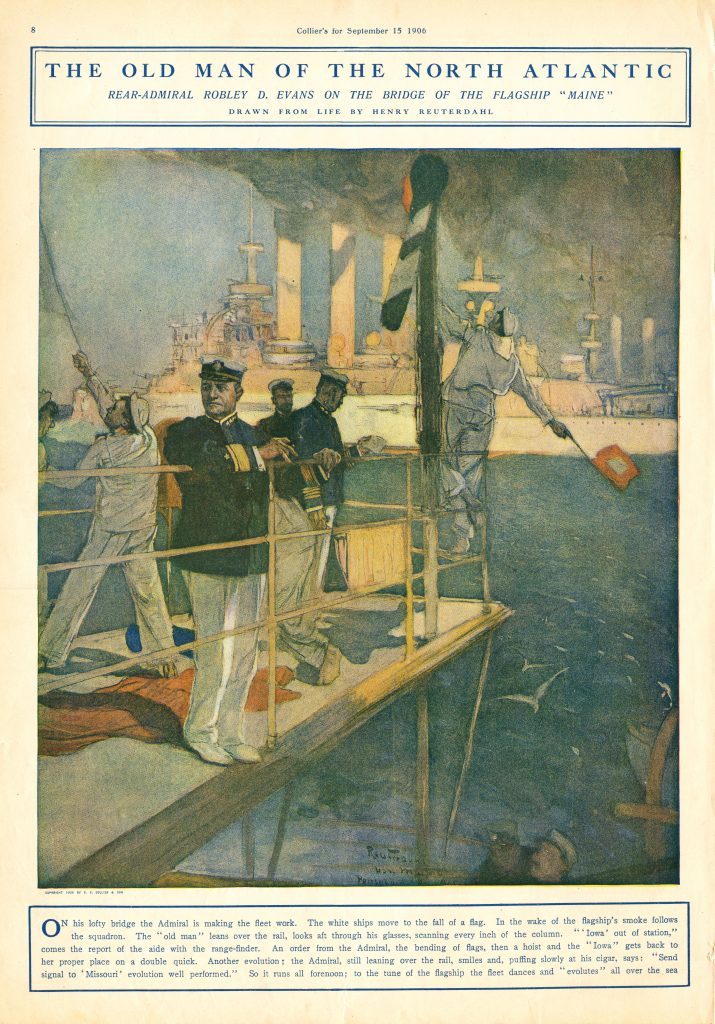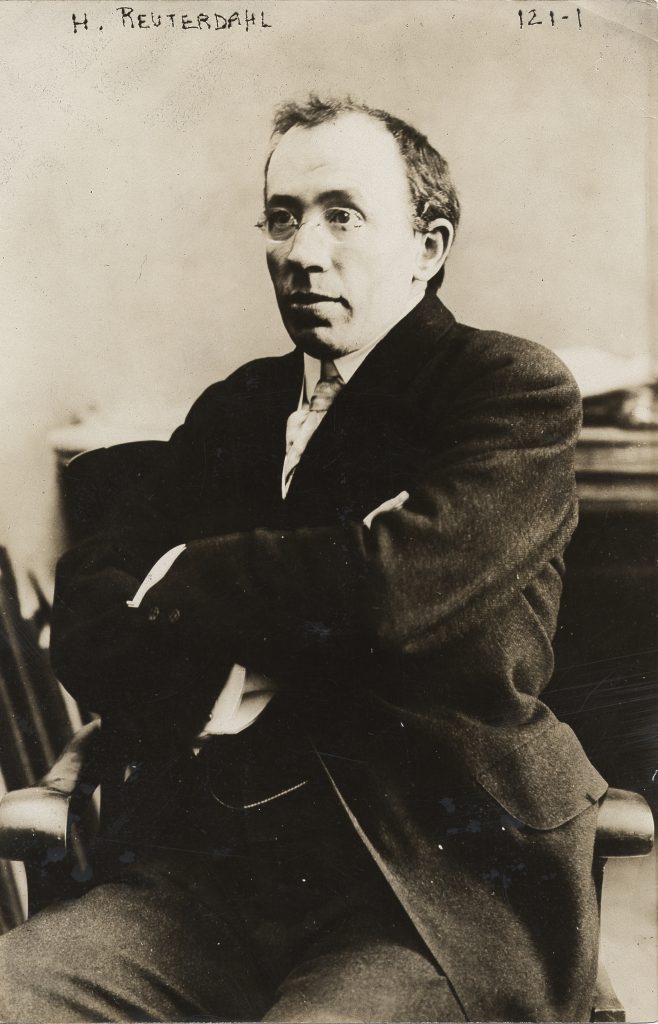Apologies, but no results were found for the requested archive. Perhaps searching will help find a related post.

Henry Reuterdahl was hand-chosen by President Roosevelt, as one of American's leading maritime painters to accompany the fleet and document the voyage on canvas. His work was widely accepted in many books and magazines and his ability to capture everyday events quickly and effectively made him ideal for this task. A Lieutenant in the United States Navy, Henry Reuterdahl, 18711-1925, was best know for his paintings of Navy warships and recruiting posters for World War I, though he did exhibit in the 1913 Armory Show, in New York City. He also painted landscaptes in a kind of tapestry-like, pointillist, impasto style. His trip with the fleet was aboard the USS Culoga where he was able to observe the other ships from the ship's deck and bridge as they appeared to port and starboard in formation steaming.
strait of magellan
Henry Reuterdahl - United States Fleet in the Strait of Magellan, the morning of February 8, 1908. Dated and signed 1910.
This painting captured the challenge and adventure of 16-battleships steaming through the straits with tight passages and mountain-views on all sides.
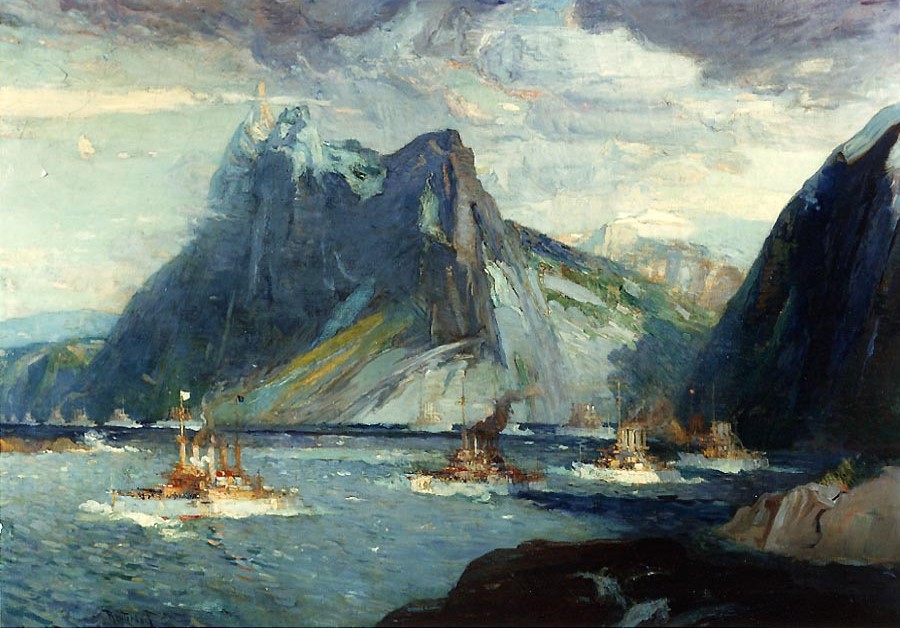
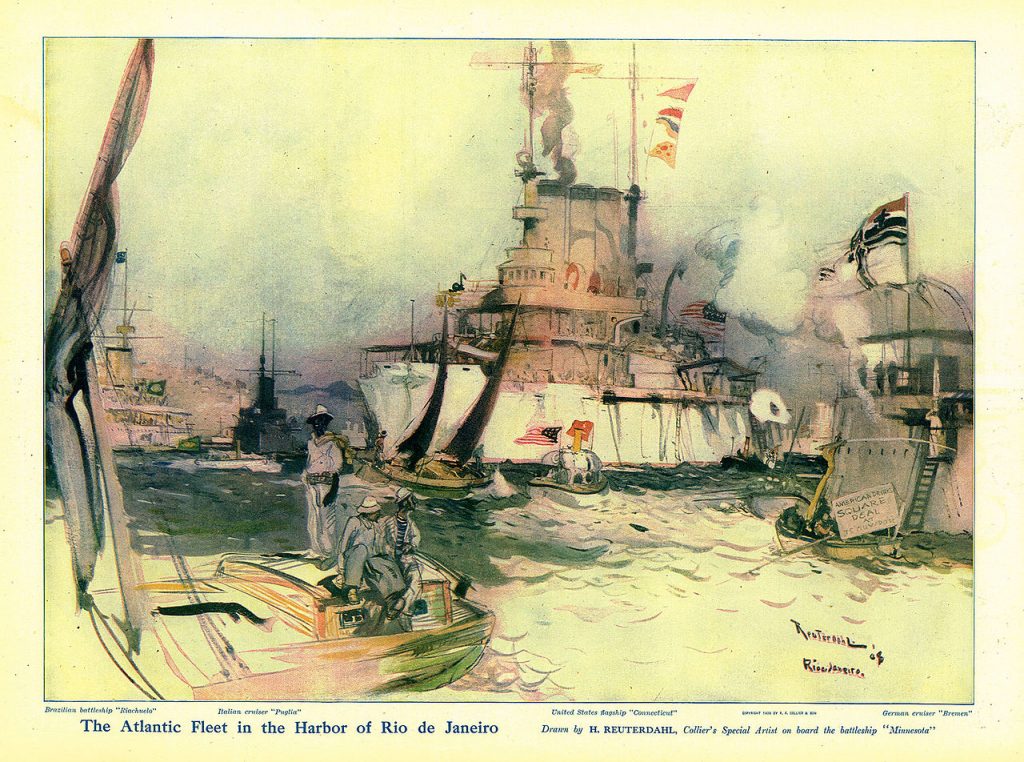
Unfortunately, this great artist did not accompany the fleet on the entire voyage. Henry was also active with his opinions, and unbeknownst to the President, Reuterdahl had published an article in McClure's Magazine, January 1908, "The Needs of our Navy." His critical article, inspired by his discussions with William S. Sims, Naval Aide to President Roosevelt, discussed the armored belts of the battleships, ability of the gun batteries to fire during pitching seas, and the design of ammunition shafts aboard the ships.
By the time the article was published Henry had already departed with the fleet. A Congressional probe ensued, angry over the issues Reuterdahl and Sims had brought up regarding fleet readiness just prior to going to sea and possibly meeting the Japanese fleet in war. With the implication of his article he was no longer deemed worthy of traveling with the fleet and was put ashore in Punta Areas, Chile to find his own transportation home. The work at left shows Rio de Janeiro harbor with the fleet at anchor.
His artwork is limited to the first portion of the cruise. His transportation home must have taken him through Magdalena Bay as he did complete some illustrations of target practice.

crossing-the-line and target practice
From the period during which the fleet was in Magdalena Bay, Reuterdahl produced this series of water colors showing shapshots of the Joys of Target Practice. Practicing for almost a month, he was probably able to stop on his way north and view from one of the auxiliary ships before heading north and witnessing the ships entering Golden Gate in San Francisco.
At right is a series of images from the crossing-the-line ceremony that he must have witness early in the cruise. King Neptune overseas the initiation of the polywogs as they are initiated into the realm of the deep.

the old man of the North atlantic
Of all the images of Robley Evans, this watercolor of him standing on the bridge-wing of the USS Maine is the finest. It shows Evans as a commander in a distant thought while the activity of the ship proceed around him. Reuterdahl had a keen eye as an artist. He understood the Admiral and his portrait is a clear indication.
Caption: On his lofty bridge the Admiral is making the fleet work. The white ships move to the fall of a flag. In the wake of the flagship's smoke follows the squadron. The "old man" leans over the rail, looks aft through his glasses, scanning every inch of the column. "Iowa' out of station," comes the report of the aide with the range-finder. An order from the admiral, the bending of flags, then a hoist and the "Iowa" gets back to her proper place on a double quick. Another evolution; the Admiral, still leaning over the rail, smiles and, puffing slowly at his cigar, says: "Send signal to 'Missouri' evolution well performed." So it runs all forenoon; to the turn of the flagship the fleet dances and "evolutes" all over the sea.
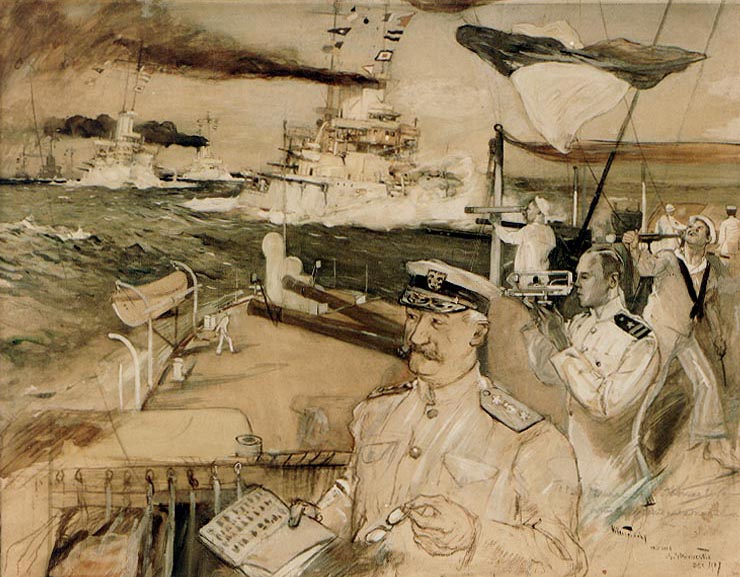
when jack comes marching home
At left is a watercolor he completed of a scene underway. It shows Rear Admiral Thomas the bridge of the Minnesota with a junior officer in the background using a statometer to keep station in the formation and a signalman hoisting signal flags to the other ships.
His work was published in Collier's Magazine, a popular weekly magazine that ran articles about the fleet throughout the cruise. At right, "When Jack Comes Marching Home" from June 1908 shows sailors getting off the ships with souvenirs, camera, pets, and laundry stepping out to meet the people of California.
This is one of my favorite works of his because I think i captures the spirit of the American sailor even today. Different from those who select the Army, Air Force, Marines, or Coast Guard, an American sailor seems to chose shipboard life for the travel and adventure over any plans of military action. They enjoy being at sea from port-to-port for months and arrived home with a collection of items and a story to tell.
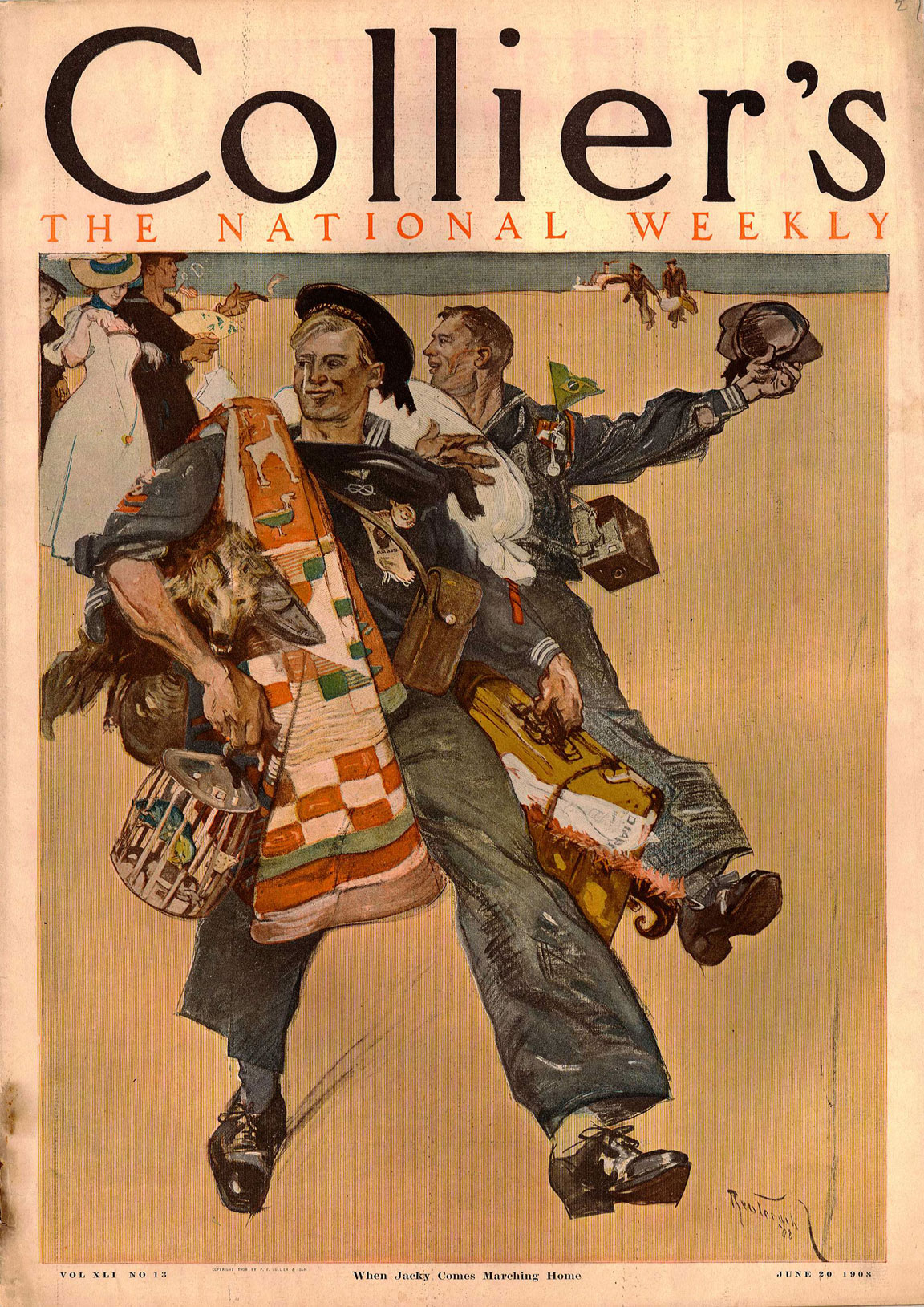
Henry's work is displayed at the Navy Department in Washington, the National Museum in Washington, the Naval War College in Newport and the Naval Academy by ten paintings. During World War I he contributed huge naval paintings for the campaign to float Liberty Bonds. He died at the St. Elizabeth's Government Hospital for the Insane on Sunday night, December 23, 1925 and was barried with military honors at Arlington National Cemetery, Section 4W Site 3010.

